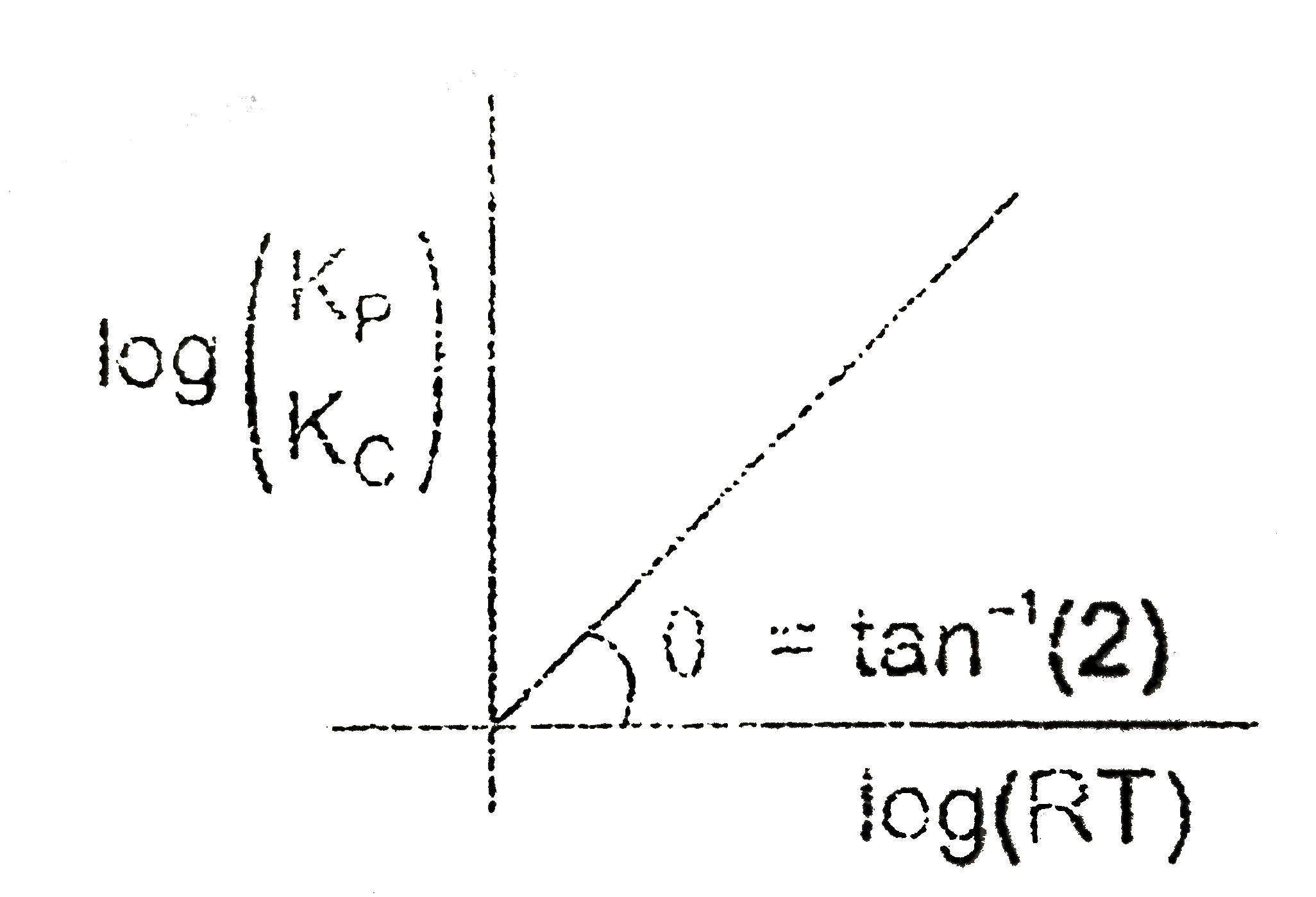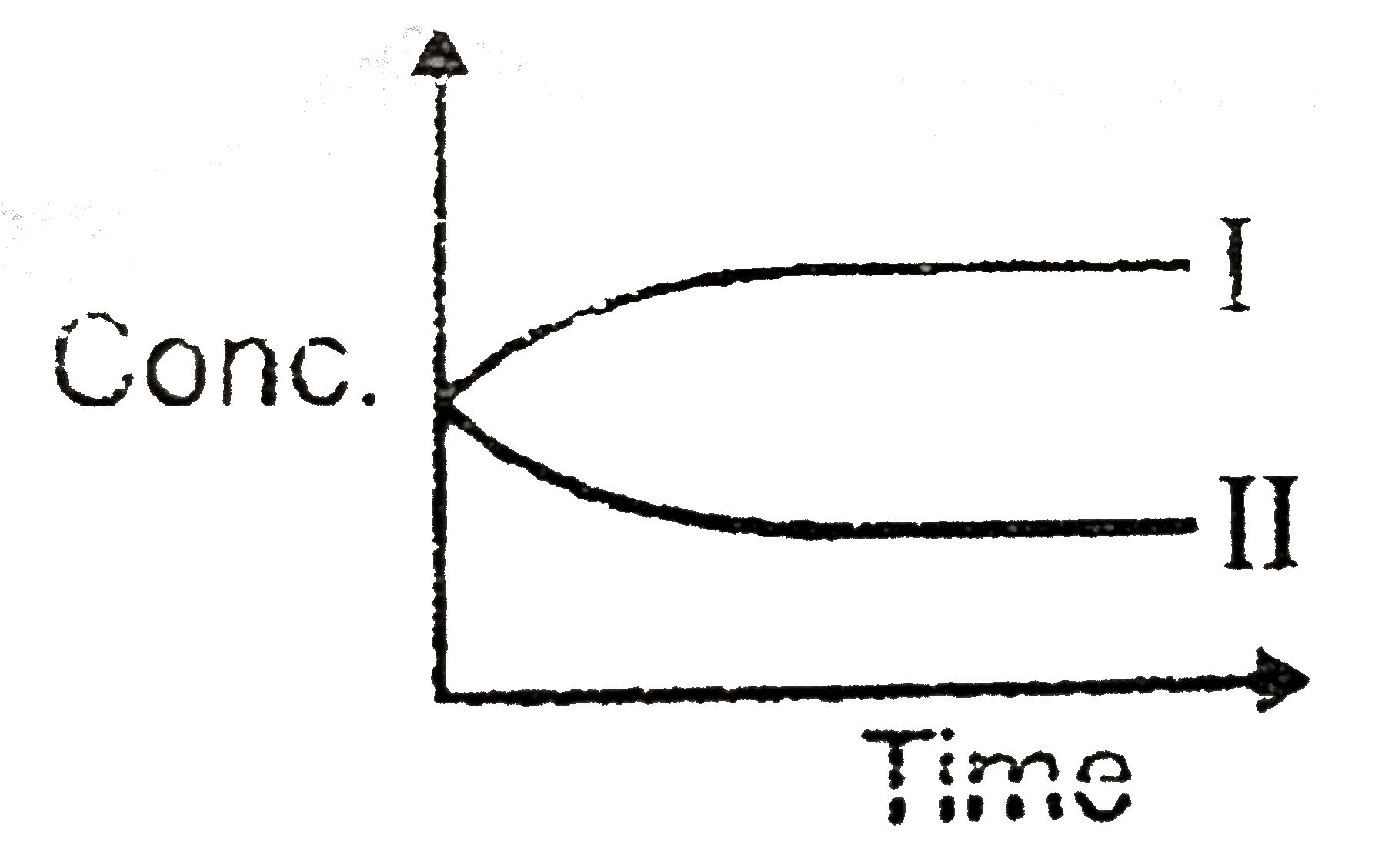Complete Solutions to Exercise-2 (Part-3) of chapter CHEMICAL EQUILIBRIUM of Class 11 book with complete answers and questions
| Class 11 | CHEMISTRY |
| Chapter | CHEMICAL EQUILIBRIUM |
| RESONANCE | Exercise-2 (Part-3) |
| Number Of Questions | 33 |
| Academic Year | 2023-24 |
Which of the following is correct about the chemical equilibrium ?
View SolutionFor a reaction `N_(2)+3H_(2)hArr2NH_(3)`, the value of `K_(C)` does not depends upon:
View SolutionWhich of the following statements is/are correct.:
View Solution`64 gm` of `CH_(4)` and `68gm "of" H_(2)S` was placed in an close container and heated up to `727^(@)C` following equilibrium is established in gaseous phase reaction is:
`CH_(4)(g)+2H_(2)S(g)hArrCS_(2)(g)+4H_(2)(g)`
The total pressure at equilibrium is `1.6` atm and partial pressure of `H_(2) "is" 0.8` atm, then
View SolutionFor `A+B hArr C`, the equilibrium concentration of A and B at a temperature are `15 mol L^(-1)`. When volume is doubled the reaction has equilibrium concentration of A as `10 mol L^(-1)`, calculate
a. `K_(c)`
View SolutionConsider the following gases equilibrium given below:
(i) `N_(2)+3H_(2)hArr2NH_(3),"Eqm.Constant"=K_(1)`
(ii)`N_(2)+O_(2)hArr2NO, Eqm.constant=K_(2)`
(III) `H_(2)+(1)/(2)O_(2)hArrH_(2)O,Eqm.constant=K_(3)`
The equilibrium constant for the reaction ,`2NH_(3)+(5)/(2)O_(2)hArr3H_(2)O"in terms of" K_(1),K_(2)andK_(3)`will be :
View Solution(i) `N_(2)(g)+O_(2)(g)hArr2NO(g), K_(1)`
(ii) `((1)/(2))N_(2)(g)+((1)/(2))O_(2)(g)hArrNO(g), K_(2)`
(iii) `2NO(g)hArrN_(2)(g)+O_(2)(g), K_(3)`
(iv) `No(g)hArr((1)/(2))N_(2)(g)+((1)/(2))O_(2)(g), K_(4)`
Correct relation between `K_(1),K_(2),K_(3) "and" K_(4)` is//are:
View SolutionIf `log(K_(C))/(K_(P))-log[(1)/(RT)]=0`, then above is true for the following equilibrium reaction
View SolutionThe reaction for which `K_(P)=K_(C)` is satisfied
View SolutionAt `300 K`, the reactions satisfying the following graph is:

View Solution`N_(2)O_(4)(g)hArr2NO_(2)(g),K_(C)=4`. This reversible reaction is studied graphically as shown in figure. Select the correct statements.

View Solution`A 2` lit vessel is filled by `1` mole of each gas `A "&" B.` If `K_(C)` for reaction `A(g)hArrB(g)` is `1.5` at temp. `T`. [Atomic mass of `A` is `40` & `B "is" 20`].

View SolutionThe equilibrium constant for some reactions are given below against each of the reaction
(i) `2N_(2)+5O_(2)hArr2N_(2)O_(5) , K=5xx10^(-27)`
(ii) `N_(2)+O+(2)hArr2NO , K=2xx10^(-15)`
(iii) N_(2)+2O_(2)hArr2NO_(2) , K=1.5xx10^(-29)`
Which of the following statement is correct
View SolutionFor the reaction, `SnO_(2)(s)+2H_(2)(g) hArr Sn(l)+2H_(2)O(g)` the equilibrium mixture of steam and hydrogen contained `45%` and `24% H_(2)` at `900 K` and `1100 K` respectively. Calculate `K_(p)` at both the temperature.
View SolutionThe equation `alpha=(D-d)/((n-1)d)` is correctly matched for: (`alpha` is the degree of dissociation, D and d are the vapour densities before and after dissociation, respectively).
View SolutionIf reaction `A+BhArrC+D`, taken place in `5` liter close vessel, the rate constant of forward reaction is nine times of rate of backward reaction.
If initially one mole of each reactant present in the container, then find the correct option//is.
View SolutionConsider equilibrium `H_(2)O(l)hArrH_(2)O(g)`. Choose the correct direction of shifting of equilibrium with relative humidity.
View SolutionConsider the following equilibrium
`2AB(g)hArrA_(2)(g)+B_(2)(g)`
The vapour density of the equilibrium mixture does not depend upon
View SolutionVapour density of equilibrium `PCI_(5)(g)hArrPCI_(3)(g)+CI_(2)(g)` is decreased by
View Solution`CuSO_(4),5H_(2)O(s)hArrCuSO_(4)(s)+5H_(2)O(g)K_(P)=10^(-10) "moles of" CuSO_(4).5H_(2)O(s)` is taken in a `2.5L` container at `27^(@)C` then at equilibrium [Take: `R=(1)/(12)` litre atm `mol^(-1)K^(-1)`]
View Solution`CuSO_(4).5H_(2)O(s)hArrCuSO_(4).3H_(2)O(s)+2H_(2)O(s) K_(P)=0.4xx10^(-3) atm^(2)`
Which of following sttement are correct:
View SolutionEach question contains STATEMENT-1 (Assertion) and STATEMENT-2( Reason).
Examine the statements carefully and mark the correct answer according to the instruction given below:
STATEMENT-1: The equilibrium constant of the exothermic reaction at high temperature decreases.
STATEMENT-2: Since In `(K_(2))/(K_(1))=(DeltaH^(@))/(R)[(1)/(T_(1))-(1)/(T_(2))]` and for exothermic reaction ,
`DeltaH^(@)=`-ve and thereby, `(K_(2))/(K_(1))lt1`
View Solution`1` mole each of `H_(2)(g) "and" I_(2)(g)` are introduced in a `1L` evacuated vessel at `523K` and equilibrium`H_(2)(g)+I_(2)(g)hArr2Hi(g)` is established. The concentration of `HI(g)` at equilibrium:
View SolutionFor the reaction `PCl_(5(g))hArrPCl_(3(g))+Cl_(2(g))`, the forward reaction at constant temperature is favoured by
View SolutionWhich of the following reaction will shift in forward direction. When the respective change is made at equilibrium
View SolutionWhich of the following will not affect the value of equilibrium constant of a reaction?
View SolutionIf the volume of the racion flask is reduced to half of its initial value and temperature is kept constant the in which of the following cases the position of equilibrium will not shift?
View Solution`2CaSO_4 (s) hArr 2CaO(s)+2SO_(2)(g)+O_2(g), DeltaHgt0`
Above equilibrium is establised by taking some amount of `CaSO_4(s)` in a closed container at 1600 K. Then which of the following may be correct options ?
View SolutionAn industrial fuel, 'water gas', which consists of a mixture of `H_(2) "and" CO` can be made by passing steam over red-hot carbon. The reaction is
`C(s)+H_(2)O(g)hArrCO(g)+H_(2)(g),DeltaH=+131KJ`
The yield of `CO "and" H_(2)` at equilibrium would be shifted to the product side by,
View SolutionThe dissociation of phosgene, which occurs according to the
reaction `COCl_(2)(g)hArrCO(g)+Cl_(2)(g)`
Is an endothermic process. Which of the following will increase the degree of dissociation of `COCl_(2)?`
View SolutionIf two gases `AB_(2)` and `B_(2)C` are mixed, following equilibria are readily established:
`AB_(2)(g)+B_(2)C(g)rarr AB_(3)(g)+BC(g)`,
`BC(g)+B_(2)C(g) rarr B_(3)C_(2)(g)`
If the reaction started only with `AB_(2)` with `B_(2)C`, then which of the following is necessarily true at equilibrium?
View SolutionConsider the following two equilibria simultaneously established in a rigid vessel at a particular temperature
`NH_(2)COOMH_(4)(s)hArr2NH_(3)+CO_(2)(g)`
`CaCO_(3)(s)hArrCaO(s)+CO_(2)(g)`
Now, on adding some amout of `NH_(3)` to the reaction vessel, the orignal equilibrium is disturbed and a new equilibrium state is obtained. On comparing the following at the initial & final equilibrium states, select the INCORRECT statement `(s)`:
View Solution`CaCO_(3)(s)hArrCaO(s)+CO_(2)(g)`
`CO_(2)(g)hArrCO(g)+(1)/(2)O_(2)(g)`
For above simultaneous equilibrium if `CO_(2)` is added from out side at equilibrium then:
View Solution
Exercise-2 (Part-3) questions and complete solutions for chapter CHEMICAL EQUILIBRIUM of RESONANCE ENGLISH of Class 11
All Exercises from RESONANCE Class 11 CHEMISTRY CHEMICAL EQUILIBRIUM
- (MSPs)
- Advanced Level Problems (Part-1)
- Advanced Level Problems (Part-2)(Section-1)
- Advanced Level Problems (Part-2)(Section-2)
- Advanced Level Problems (Part-2)(Section-3)
- Advanced Level Problems (Part-3)(Stage-1)
- Advanced Level Problems (Part-3)(Stage-2)
- Advanced Level Problems (Part-3)(Stage-5)
- Board Level Exercise
- Exercise-1 (Part-1)
- Exercise-1 (Part-2)
- Exercise-2 (Part-1)
- Exercise-2 (Part-2)
- Exercise-2 (Part-3)
- Exercise-2 (Part-4)
- Exercise-3 (Part-1)
- Exercise-3 (Part-2)
- INORGANIC CHEMISTRY(Metallurgy)
- ORGANIC CHEMISTRY(Alkyl Halide, Alcohol,Phenol,Ether)
- PHYSICAL CHMISTRY (CHMICAL EQUILIBRIUM)
- Solved examples